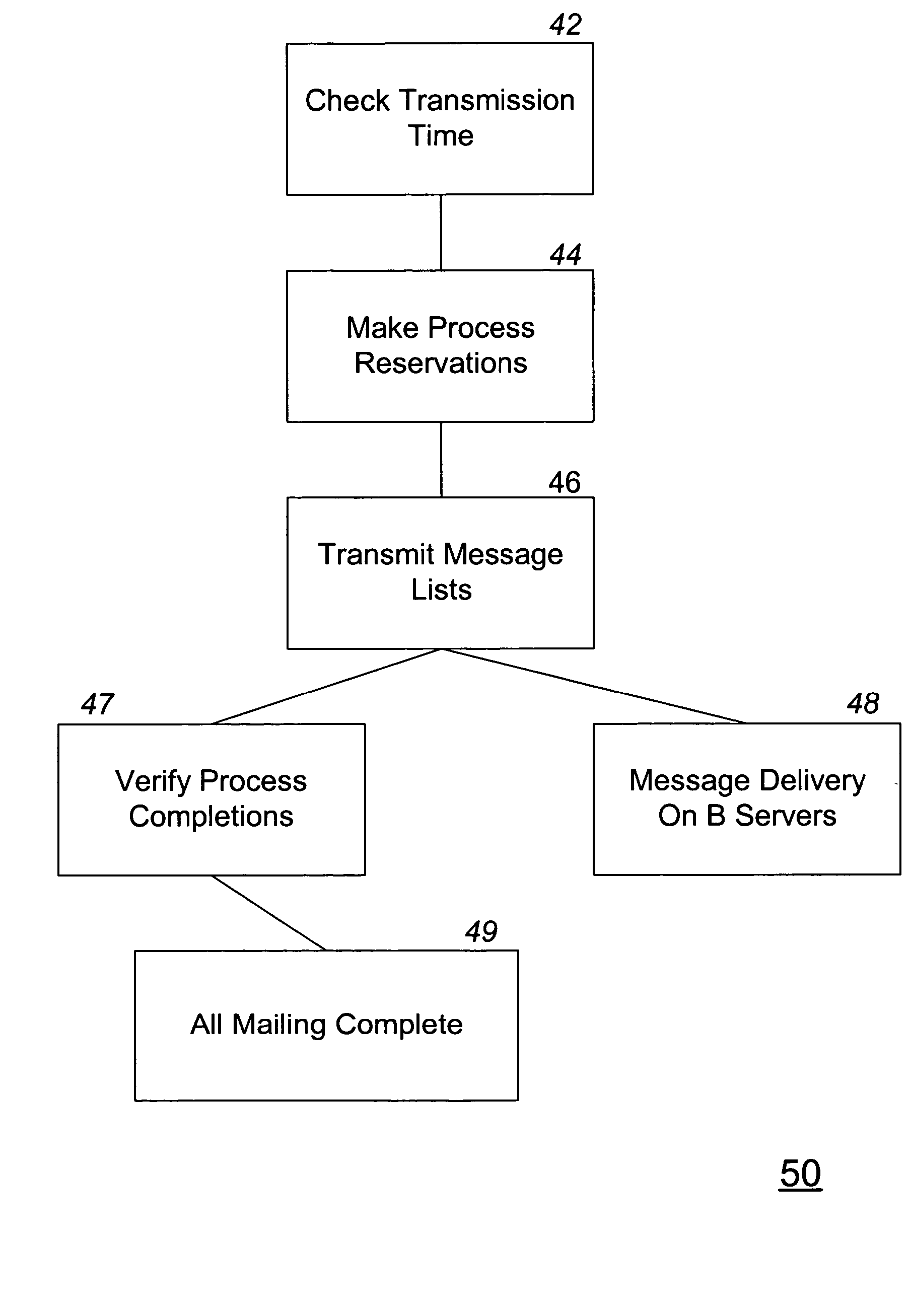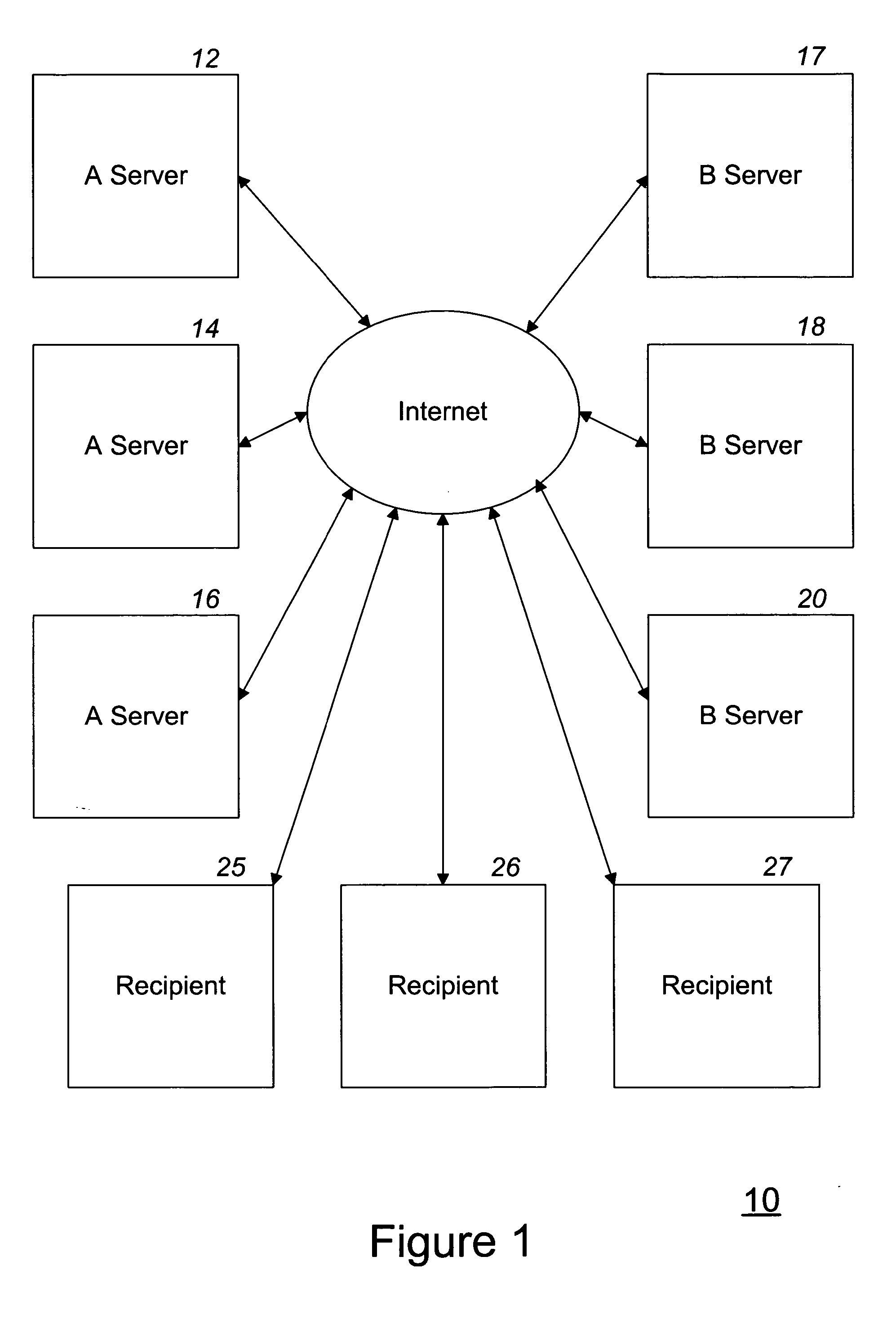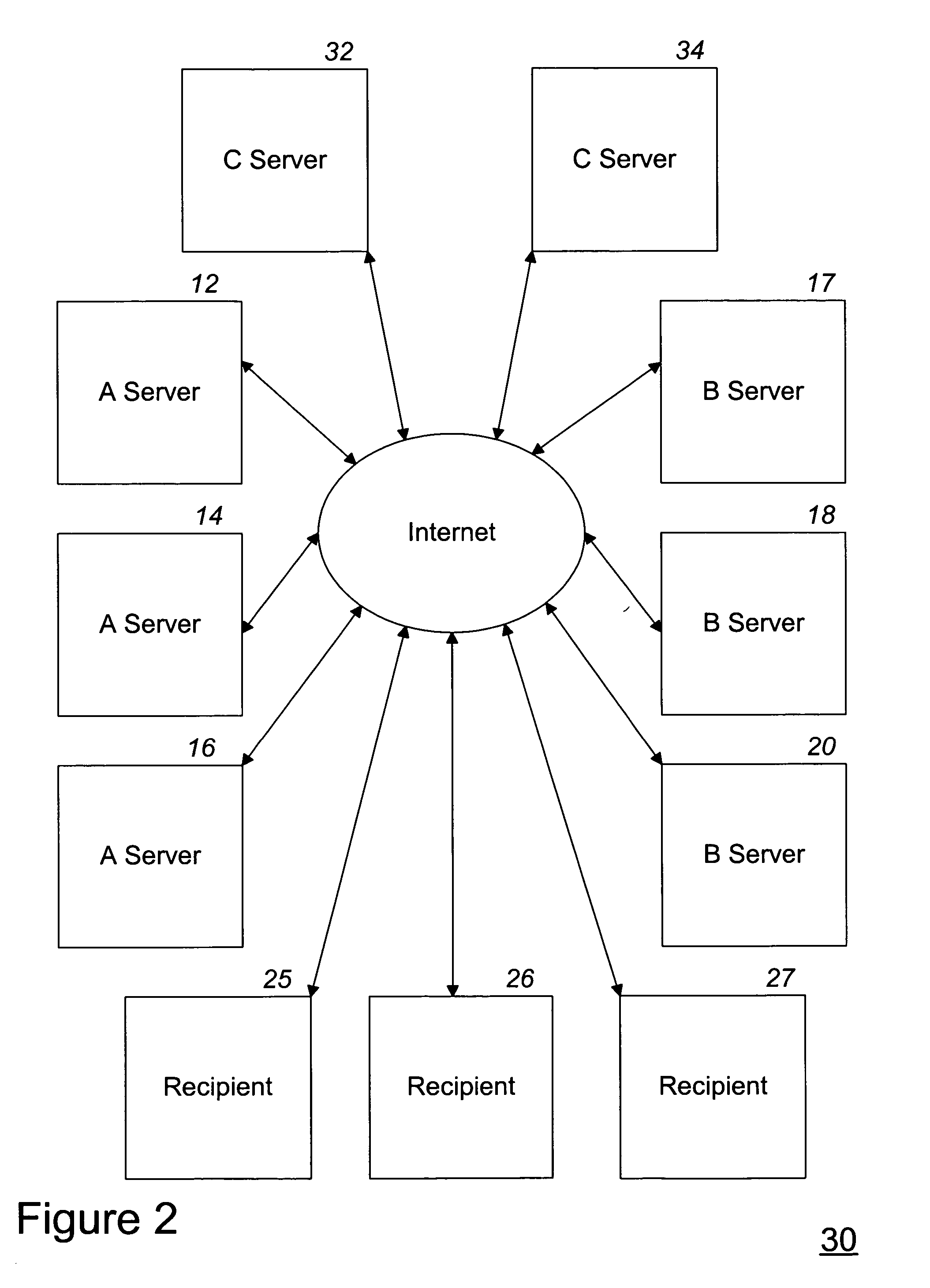High volume electronic mail processing systems and methods having remote transmission capability
a technology of electronic mail and processing systems, applied in the field of electronic telecommunications systems and methods, can solve the problems of system speed of microprocessor, recognition of the inability of these conventional systems to handle the transfer of electronic mail messages to mailing lists, and inability to quickly and efficiently process very large lists
- Summary
- Abstract
- Description
- Claims
- Application Information
AI Technical Summary
Benefits of technology
Problems solved by technology
Method used
Image
Examples
Embodiment Construction
[0042] A first exemplary embodiment of the present invention is shown generally at 10 in FIG. 1. In accordance with this exemplary embodiment of the present invention, high volume electronic mail messaging transfer systems and methods employ several groups of servers in order to more efficiently handle processing and transmission of electronic mail messages to large numbers of recipients.
[0043] As shown in FIG. 1, a first plurality of servers referenced as the A servers 12, 14, 16 are linked via the internet with a second plurality of servers. The first group of servers designated as the A servers in the preferred exemplary embodiment provide storage for databases containing various electronic mail lists. These servers also preferably contain the majority of software which is used in manipulation and processing of messages for transmission to the recipients identified on the lists. For example, this software is capable of generating reports and controlling actual electronic mail del...
PUM
 Login to View More
Login to View More Abstract
Description
Claims
Application Information
 Login to View More
Login to View More - R&D
- Intellectual Property
- Life Sciences
- Materials
- Tech Scout
- Unparalleled Data Quality
- Higher Quality Content
- 60% Fewer Hallucinations
Browse by: Latest US Patents, China's latest patents, Technical Efficacy Thesaurus, Application Domain, Technology Topic, Popular Technical Reports.
© 2025 PatSnap. All rights reserved.Legal|Privacy policy|Modern Slavery Act Transparency Statement|Sitemap|About US| Contact US: help@patsnap.com



